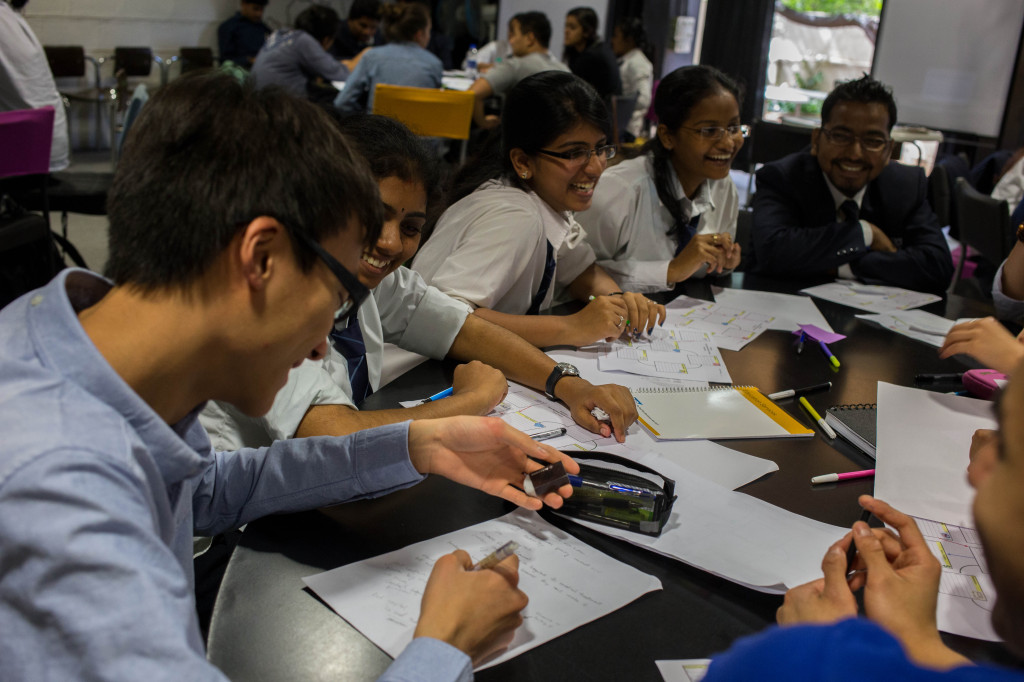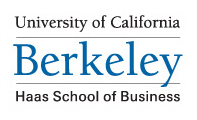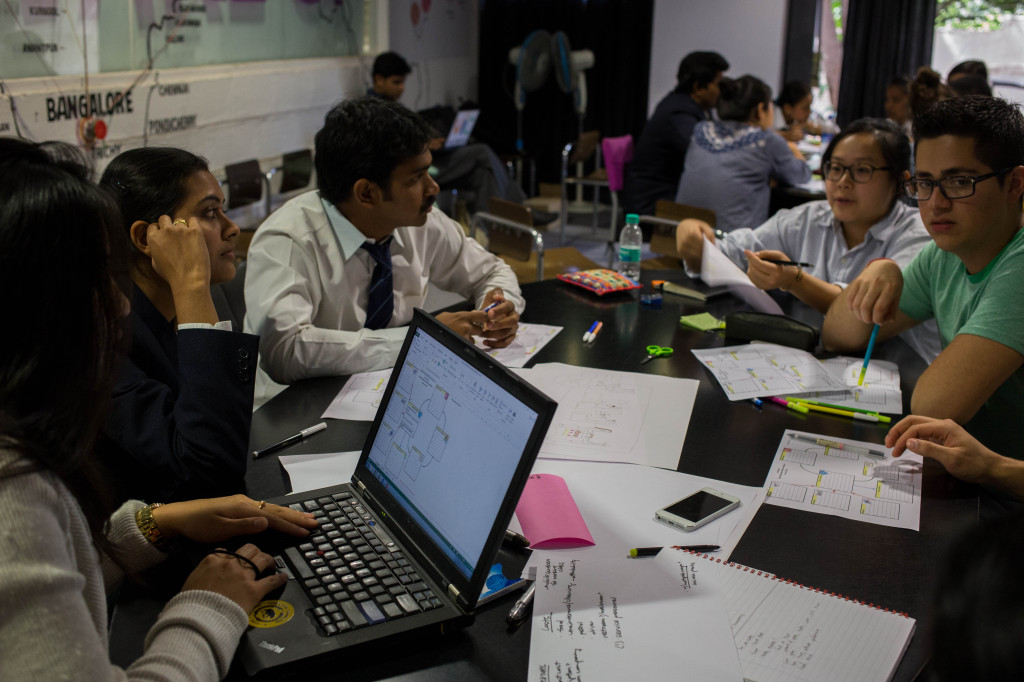This morning, the students got to sleep in a bit before preparing for Professor Darwin’s lecture at the Lalit Ashok Hotel. Over breakfast, the students conversed about the open innovation they had been introduced to by SELCO the previous day. The general manager of SELCO, a well-spoken young woman named Ms. Surabi, informed the students of the economics of a sustainable energy system for those unconnected to the electricity grid in India. What really surprised many of the students was SELCO’s visionary work and dedication to convincing banks to give out loans to rural Indians, as well as putting up the initial collateral to vouch for them. This was a prime example of the concept of Jugaad innovation that Professor Darwin lectured on earlier in the trip.
This was a perfect transition into our third lecture of the series with Professor Darwin; a talk focused on the strategies and methods by which businesses can create wealth. Many of the principles that he emphasizes highlighted the significance of value creation and value capture. Every company has assets that it needs to allocate in order to make profit. Nonetheless, the strategy a company chooses in deploying its capital can be tailored through open innovation. Professor Darwin introduced the concept of asset access, versus asset ownership (the sharing economy). These distinctions, while small, make a big difference in whether business models can succeed or not. A business model that cannot scale technology, no matter how fast that new technology is introduced, will never emerge as a successful company.
These principles were applied in full force at the DREAM:IN workshop with Indian MBA students. After introducing themselves, the Haas group collaborated with their Indian counterparts to define the eight areas of innovation in a start-up idea for their respective companies. Ideas ranged from college career centers, to hospitals, to shuttle services for those commuting to work.

Students share ideas to come up with a sustainable and profitable business model that incorporates open innovation.
Every company involved both a profitable aspect, as well as a social aspect. The students’ biggest challenge was to provide these services through business models different from traditional profit making schemes, while ensuring the same standard of service. Groups of four Haas students intermixed with two to four Indian students talked about the challenges of bringing high quality talent to the students’ town of Tumkur. After discussing various solutions, the students enjoyed a traditional south Indian lunch of paneer, assorted rice, and curries. They learned a little more of each other’s backgrounds, connecting on a personal level regarding hobbies, school life, finding jobs, and family expectations. They found that their similarities much outweigh their differences and their potential in working together is limitless. They also learned about a typical Indian MBA’s routine, which comprised of yoga at 5:30am, classes from 8:30-5:00pm, and homework time from 5:00-7:30pm. The dedication to education that is apparent here is apparent in driving the nation’s future growth.
After lunch, the students talked in depth about how realistic their value creation and capture models were; they broke down the project into questions that they had to ask in order to further the idea stage. This included questions such as how much people would be willing to pay for certain services and what preexisting notions or alternatives they are currently using. The greatest hurdle that arose was still the factor of trust and sharing of ideas, especially when the ideas are fairly new to the community and yet to be proven credible. The Haas students acted like consultants for the Indian students, whose part was to be the entrepreneur. They then set up a framework for the presentation to be given in five days’ time to senior level executives in India. The Indian students were challenged by Professor Darwin to come up with their own presentation and to reach the level of innovation that Professor Darwin had previously experienced with Chinese students last year. They concluded with to-do lists on both sides, ready to contact students, parents, peers, and companies.
After an intriguing talk with the CEO of the Manipal Foundation, Bala Warrier, and IDIOM director, Sonia Manchanda, regarding the social, economic, and political landscape of India and its future, the students embarked on a night stroll to their dinner location. The dinner buffet took place at the Solitaire Hotel, which offered a rooftop view of Bangalore and endless appetizers and entrees. The dinner was filled with more reflection and bonding between Haas students as well as Professor Darwin himself; the trust within our group is continually being strengthened throughout this trip. Returning to the hotel, the students gathered their thoughts and prepared for tomorrow’s visit to SAP Labs and Apollo Hospitals!




